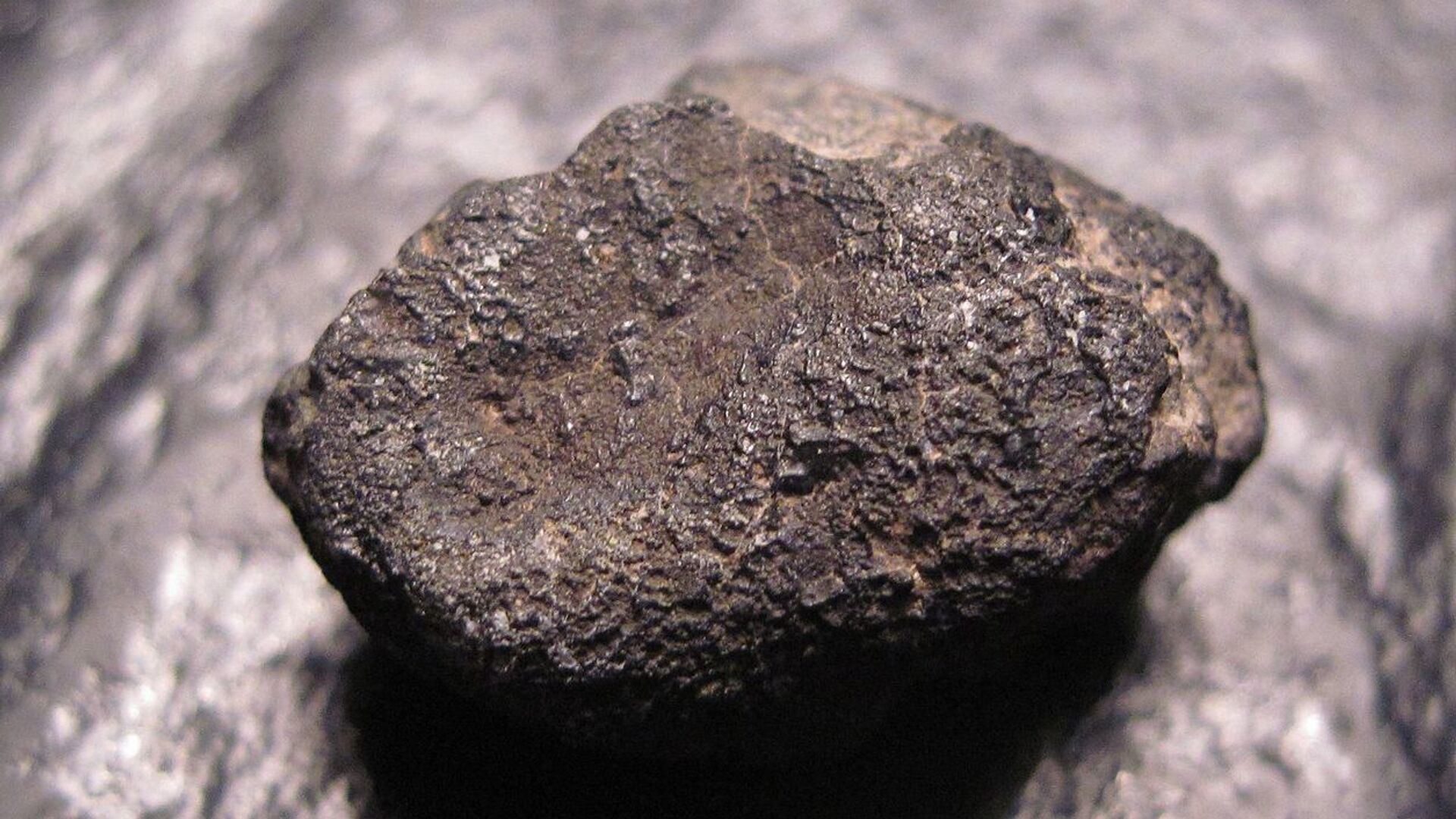https://sputnikglobe.com/20220427/two-missing-dna--rna-nucleotides-found-in-meteorite-suggest-life-could-have-arisen-from-space-1095087631.html
Two Missing DNA & RNA Nucleotides Found in Meteorite Suggest Life Could Have Arisen From Space
Two Missing DNA & RNA Nucleotides Found in Meteorite Suggest Life Could Have Arisen From Space
Sputnik International
DNA and RNA molecules encode information using five “information” components - nucleotides. Three of them, adenine, guanine and cytosine, are part of both... 27.04.2022, Sputnik International
2022-04-27T03:46+0000
2022-04-27T03:46+0000
2022-04-27T03:46+0000
dna
rna
meteorite
space
nasa
molecules
https://cdn1.img.sputnikglobe.com/img/107817/79/1078177989_0:159:1255:865_1920x0_80_0_0_b87fef5ad5a42efbdee65269611506ec.jpg
Members of NASA's international research team found in meteorite samples two missing nucleotides that are part of DNA and RNA, proving that all five nitrogenous bases of the key molecules of life could be transported by asteroids, NASA reported on Tuesday.The discovered nucleotides were cytosine and thymine, used in the formation of DNA and RNA chains. According to the report, the other three components were found in space objects earlier and the difficulty in finding the rest was caused by the fragile and delicate structure of these elements and the methods of analysis utilized by researchers. In previous experiments, scientists dissolved fallen meteorites in hot formic acid and analyzed the resulting liquid, the report says.While examining the latest meteorite, biochemists used cool water instead of hot acid. In addition, the researchers said they were using more sensitive analytical methods that responded to even small amounts of the molecules.According to NASA, this discovery does not give an unambiguous answer to the question of whether life on Earth arose independently from the primordial soup or if molecules brought from space contributed to its development. Nevertheless, scientists say that the existence of all necessary nitrogenous bases in space objects will provide more opportunities for scientists to study the origins of life.
Sputnik International
feedback@sputniknews.com
+74956456601
MIA „Rossiya Segodnya“
2022
News
en_EN
Sputnik International
feedback@sputniknews.com
+74956456601
MIA „Rossiya Segodnya“
Sputnik International
feedback@sputniknews.com
+74956456601
MIA „Rossiya Segodnya“
dna, rna, meteorite, space, nasa, molecules
dna, rna, meteorite, space, nasa, molecules
Two Missing DNA & RNA Nucleotides Found in Meteorite Suggest Life Could Have Arisen From Space
DNA and RNA molecules encode information using five “information” components - nucleotides. Three of them, adenine, guanine and cytosine, are part of both molecules, thymine is only part of DNA, and uracil is part of RNA. Previously, scientists have found adenine, guanine and uracil in meteorites.
Members of NASA's international research team found in meteorite samples two missing nucleotides that are part of DNA and RNA, proving that all five nitrogenous bases of the key molecules of life could be transported by asteroids,
NASA reported on Tuesday.
The discovered nucleotides were cytosine and thymine, used in the formation of DNA and RNA chains. According to the report, the other three components were found in space objects earlier and the difficulty in finding the rest was caused by the fragile and delicate structure of these elements and the methods of analysis utilized by researchers. In previous experiments, scientists dissolved
fallen meteorites in hot formic acid and analyzed the resulting liquid, the report says.
While examining the latest meteorite, biochemists used cool water instead of hot acid. In addition, the researchers said they were using more sensitive analytical methods that responded to even small amounts of the molecules.
“We now have evidence that the complete set of nucleobases used in life today could have been available on Earth when life emerged,” said Danny Glavin, a co-author of the paper at NASA’s Goddard Space Flight Center in Greenbelt, Maryland.
According to NASA, this discovery does not give an unambiguous answer to the question of whether life on Earth arose independently from the primordial soup or if molecules brought from space contributed to its development. Nevertheless, scientists say that the existence of all necessary nitrogenous
bases in space objects will provide more opportunities for scientists to study the origins of life.

